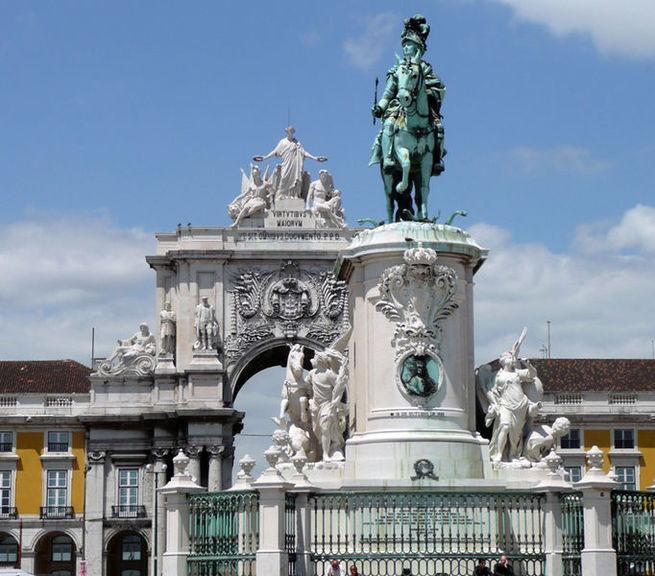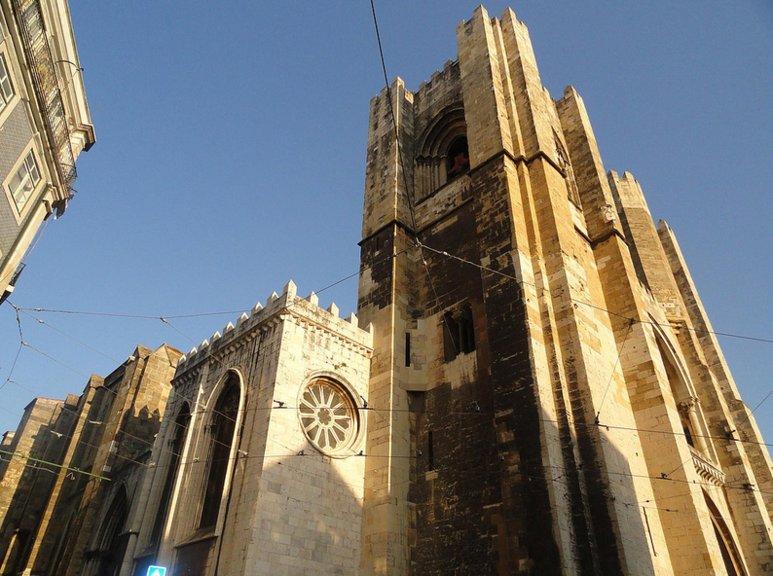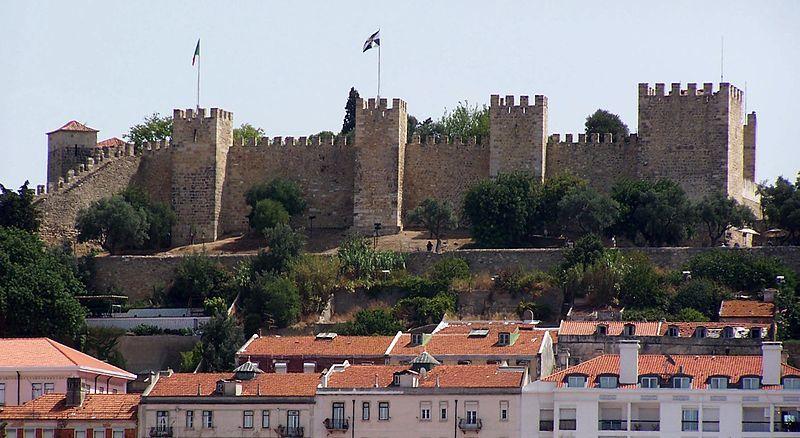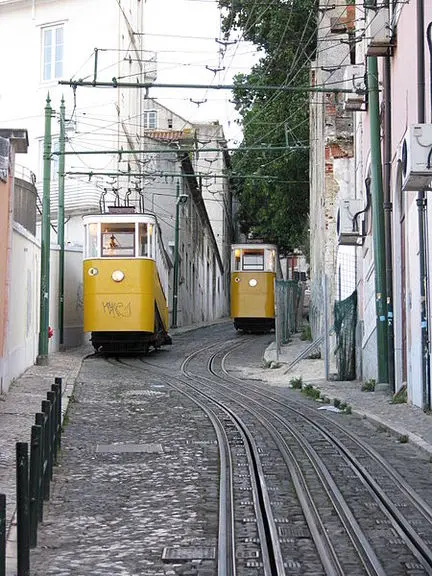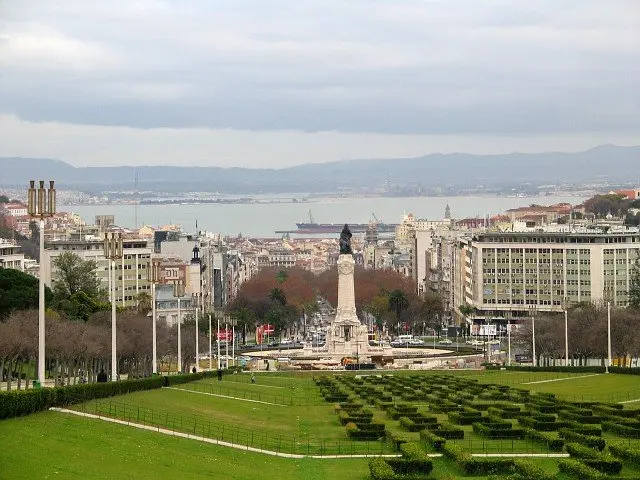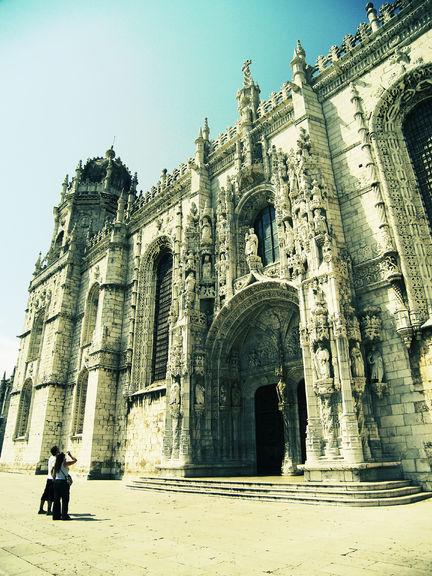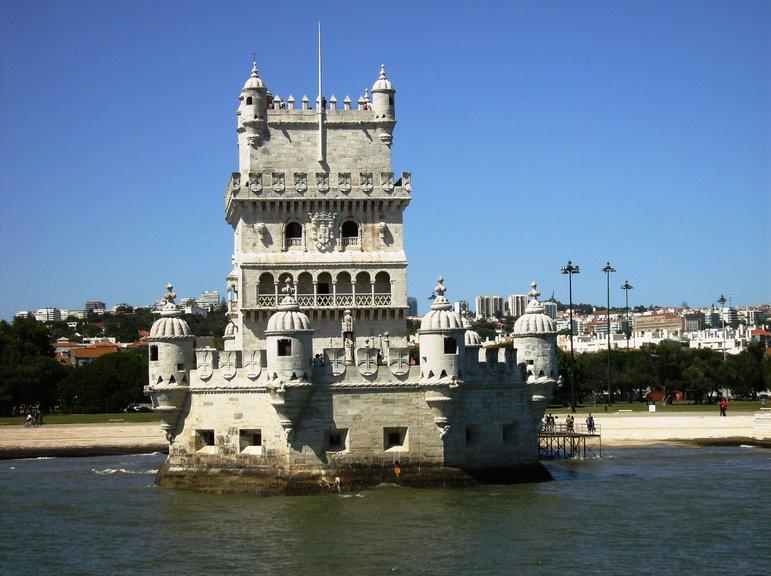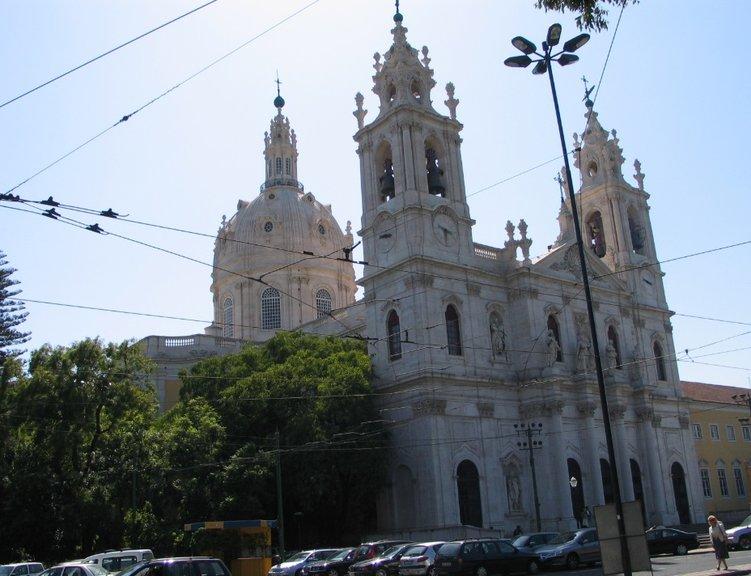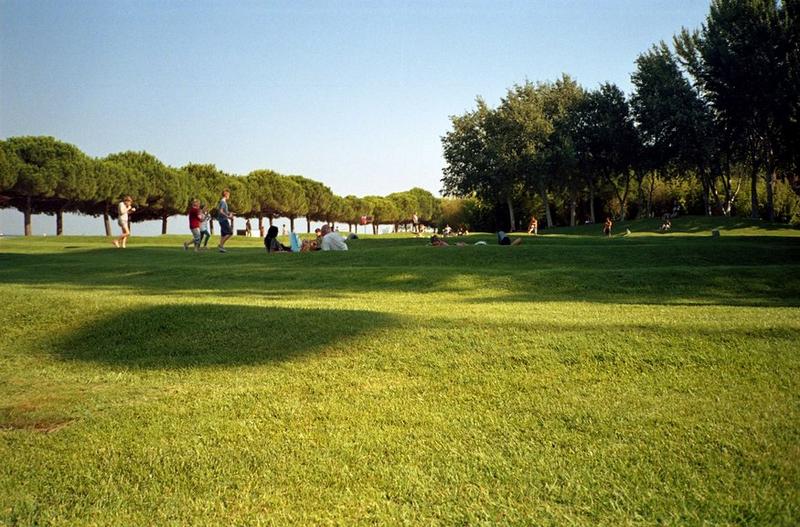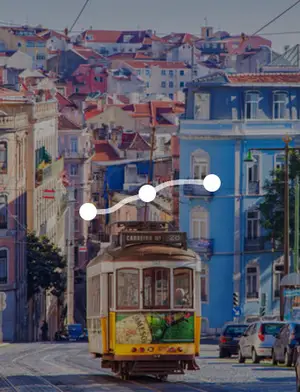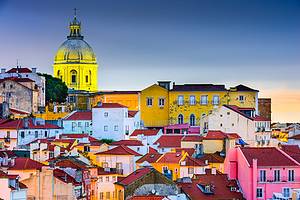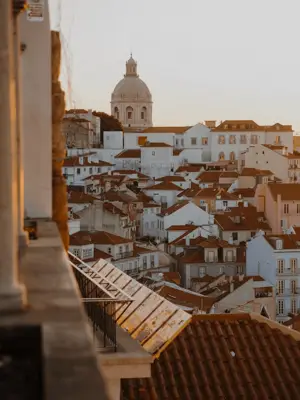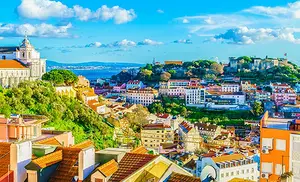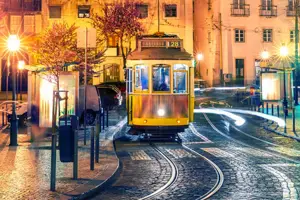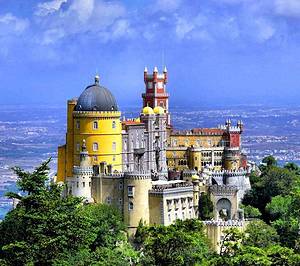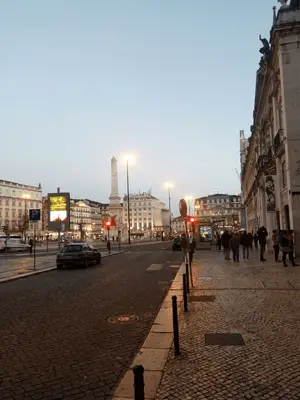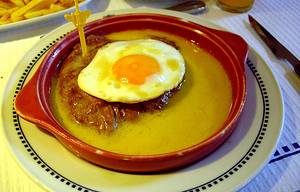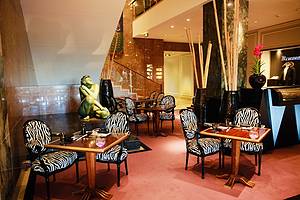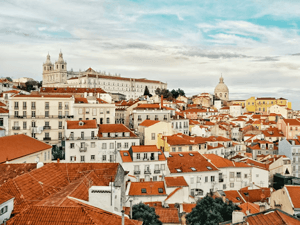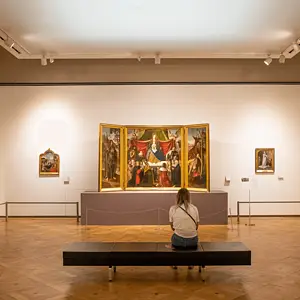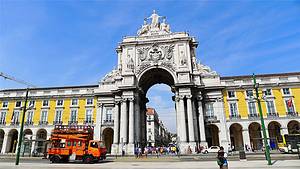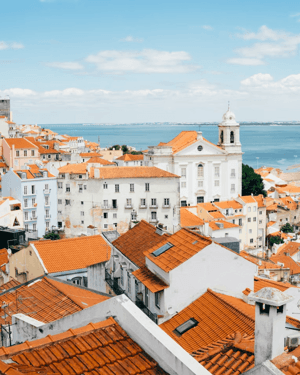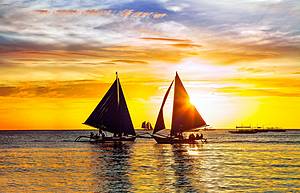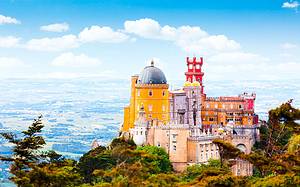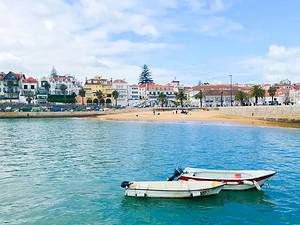3-day tour in Lisbon
2 cities |
13 attraction(s) |
total distance 58
km
 TIPS
TIPS
Day1
Day2
Day3
Day1: Lisbon
6 attraction(s) ·
8 km
1
The Augusta Street Triumphal Arch is located on the north side of the commercial square. Originally designed as a clock tower, it gradually transformed into an intricately carved arch during its construction process spanning over a century. At the top, there are four statues: two on the right are Nuno Álvares Pereira and the Marquis of Pombal, while on the left are Vasco da Gama and Viriato. The two reclining figures symbolize the two major rivers flowing through Portugal, the Tagus River and the Douro River.
1
km
2
Commerce Square (Praça do Comércio) is a square in the capital city of Lisbon, Portugal, adjacent to the Tagus River. It is also known as Palace Square (Terreiro do Paço) because the Ribeira Palace, which was destroyed in the 1755 earthquake, was once located here. After the earthquake, the Marquis of Pombal completely redesigned the square as part of the downtown area of Pombaline Baixa. Due to the construction of the new Ribeira Palace by King Manuel I outside the city walls along the Tagus River, the Ribeira area began to develop in the early 16th century. The area further developed with ports, shipbuilding facilities, the House of India (Casa da India), and other administrative buildings for trade between Portugal and other European countries, as well as Africa, Asia, and the Americas. The Lisbon earthquake of November 1, 1755, triggered a tsunami and fires that destroyed much of Lisbon, including the Ribeira Palace and other buildings along the river. Marquis of Pombal coordinated large-scale reconstruction efforts, but the palace was not rebuilt.
1
km
3
Located in Alfama, the oldest district of Lisbon, this area was once the most prosperous during the Moorish rule. It originated as a mosque but was ordered to be rebuilt as Lisbon's earliest church by D. Afonso Henriques, the founder of Portugal, after driving out the Moors in 1147. The church has endured several earthquakes, resulting in partial damages, but it has been restored each time. Observant visitors will notice that the church's architectural style is unique, incorporating elements from different eras, such as Romanesque architecture combined with Gothic rose windows and Baroque-style doors. It is quite fascinating and worth appreciating. Archaeological excavations have been ongoing in the church and its surrounding areas, continuously uncovering Moorish and even older artifacts.
2
km
4
Another important historical site in the Alfama area is one of the oldest buildings in Lisbon and one of the most significant attractions. The castle is situated at the highest point of the Alfama area and still retains a neighborhood called Santa Cruz. The castle's observation deck offers an excellent view of the Lisbon cityscape and the Tagus River, making it a great choice for watching the sunset. Human traces of habitation can be found here as early as the 6th century BC, with Phoenicians, Greeks, Carthaginians, and other civilizations leaving their marks. The castle has a long history, originally built by the Celts in the 5th century, and later fortified by the Moors and Christians, and it was even transformed into a royal palace at one point. Occupying an area of 6,000 square meters, it was an important strategic vantage point and has been successively occupied by rulers of different eras. The touching story of the Crusaders' assault on the castle has been passed down through the ages, with the legend of knight Martim Moniz seeing a small opening in the castle gate and using his own body to prevent it from closing, allowing the army to successfully enter the castle and drive out the Moors.
The castle also played many significant roles in history, such as being the place where the kings received navigational heroes. It was not until the early 16th century that King Manuel I built another palace called Palácio Ribeira by the Tagus River, gradually shifting the castle from the historical stage. In 1531, an earthquake destroyed many parts of the castle, and successive kings ordered its reconstruction, but it was never truly completed. The castle was also used as a military barracks and prison. The devastating earthquake of 1755 accelerated the castle's destruction, but after the earthquake, the clever Portuguese people learned their lesson and built the nation's first astronomical observatory on a high tower within the castle. It wasn't until 1940 that the castle underwent thorough restoration and opened to visitors in its present form. Inside the castle, there are 11 towers and a dried-up moat, with many remnants worth exploring. Collapsed city walls tell ancient stories. Notable attractions include the Tower of Ulysses (Torre de Ulisses), where a telescope allows you to observe Lisbon in 360 degrees. There's also Casa Ogival, which offers a view of five famous pointed arches and is aesthetically pleasing in terms of architectural beauty. The multimedia screening room (Olisipónia) in the tower vividly recounts the history and culture of Lisbon. Furthermore, this place was once the site of Casa Pia, an orphanage that was exposed by the local Portuguese television station in the early 21st century as the largest child abuse scandal in history.
3
km
5
The Gloria Funicular, also known as the Elevador da Glória or Elevador da Glória, is a historic public transportation system in Lisbon, similar to a tram. It was officially opened to the public on October 24, 1885, initially powered by hydraulics. In 1886, it was converted to steam power, and in 1915, it was electrified. In 2002, it was recognized as a national historical monument and is one of the most popular means of transportation in Lisbon, especially among tourists. Starting from Sao Pedro de Alcântara, it ascends 265 meters towards the higher area, and when visitors step out of the funicular at the Santuário do Cristo Rei viewpoint, they can enjoy panoramic views of the entire Lisbon city center and the Castle of Sao Jorge. Starting point: Sao Pedro de Alcântara, endpoint: Praça dos Restauradores.
3
km
6
Edward VII Park is located north of Avenida da Liberdade and Marquês de Pombal Square, occupying an area of 26 hectares. It is the finest park in Lisbon, with a variety of flowers grown in its greenhouse. The park was named after King Edward VII of the United Kingdom, who visited Portugal in 1902, symbolizing the close political relationship between England and Portugal at that time.
Day2: Lisbon > Sintra
3 attraction(s) ·
37 km
1
A comprehensive area in Lisbon that combines local life, culture, history, scenery, and even politics. The entire Belém district is built along the river, with beautiful scenery and not only Portugal's most beautiful historic buildings but also elegant parks. Most of the buildings in this area have withstood the test of the 1755 earthquake. Many buses pass through the city, so you can get off at the location you want to visit. The entire district is worth exploring, so there's no need to worry too much. Serendipity is the key. When you're in the Belém district, you must not miss Pastéis de Belém, a century-old shop that has been in business since 1837. In 1820, a "liberal revolution" occurred in Portuguese history, and in 1834, Portugal closed all monasteries. To survive, they had to start making pastries to sell, which quickly became known as "Belém" and gained fame worldwide. It officially opened in 1837 and has been passed down through generations to this day. Inside, you can find Portuguese custard tarts (Pastéis de Nata), as well as "Belém balls" (Bola de Berlim), known as Portuguese doughnuts, and many other delicious treats that the proud Portuguese people have to offer, so be careful not to have too much sweetness. In addition to tasting the food, you can also appreciate some of the craftsmanship involved, although some parts are kept as trade secrets and are not publicly accessible.
2
km
2
Belém Tower (English: Belém Tower, Portuguese: Torre de Belém) is a five-story defensive structure located in the Belém district of Lisbon, Portugal. It was built between 1514 and 1520 during the reign of King Manuel I to defend the port in Belém and the nearby Jerónimos Monastery. The tower is dedicated to the patron saint of Lisbon, St. Vincent. Over time, it has served as a customs house, a telegraph station, a lighthouse, and also marked the starting point for explorers. During the Spanish rule, it was used to imprison important political prisoners. The tower features a gloomy dungeon converted from a warehouse, and it currently houses 16th-century cannons and other artifacts. In 1983, it was officially recognized as a UNESCO World Heritage site and in 2007, it was named one of the Seven Wonders of Portugal. Belém Tower is divided into two parts: the tower body with four arched rooms and the bulwark with numerous gun emplacements. Crossing the drawbridge and passing through the main gate leads to the interior of the bulwark. There are 16 gun positions on the walls for mounting cannons to defend against enemies. The central part of the floor is raised while the edges are lower, allowing for the protection of the cannons and quick draining of water. The roof features a Gothic-style rectangular skylight for ventilation to disperse the smoke from firing cannons. Beneath the bulwark's floor, there are storage rooms, with the largest one accessible from the northern staircase. Initially used for storing supplies, these rooms later became dungeons. On the right side of the entrance, a steep staircase leads to the platform on top of the bulwark. The polygonal platform has six sentry boxes on its corners, each with an observation window and a pepper pot-shaped roof. In the center of the platform, there is a railing surrounding the courtyard below. To the south of the railing, there is a statue of Our Lady of Good Success, also known as the Grape Virgin. The tower faces south, and the entrance is located on the platform of the bulwark. The south facade of the tower is adorned with exquisite stone carvings. The balcony on the second floor features decorative friezes and railings, with a large Royal Shield of King Manuel I above it. This front side, adorned with royal symbols and Manueline elements, received praise from travelers and sailors of the 16th century. Ascending the staircase along the right side leads to the first room inside the tower, known as the Captain's Room. There is an octagonal opening in the floor used as a water tank for collecting rainwater. The ceiling of the room is coated with lime. Entrances to the sentry boxes are found at the northeast and northwest corners. On the left side, there is a spiral staircase that leads to the upper rooms. The name of the room possibly originates from its previous use as the captain's office. In 1521, Gaspar de Paiva worked and exercised administrative and judicial powers here. Going up the spiral staircase leads to the second room, known as the King's Room. This room opens to a balcony on the south side, with eight circular holes in the floor for defenders to drop stones and boiling oil. The room above is called the Audience Room, which has two large windows and a fireplace between them. The topmost room is known as the Chapel, featuring a fan-shaped vaulted ceiling decorated with Manueline symbols. Overall, this room is quite simple in design.
36
km
3
Cape Roca is a cape in Portugal, adjacent to the Atlantic Ocean. It is a narrow cliff with an elevation of about 140 meters, located at the western end of the Sintra Mountains. It is situated at 38 degrees 47 minutes north latitude and 9 degrees 30 minutes west longitude, approximately 40 kilometers from Lisbon. Cape Roca is the westernmost point of Portugal and the westernmost point of the entire Eurasian continent. A lighthouse and a cross facing the ocean have been built on the cliffs of Cape Roca. The monument is inscribed with the famous Portuguese phrase "Land ends here, sea begins" (Onde a terra a caba e o mar começa). Cape Roca has been rated as one of the "50 places in the world worth visiting" by netizens.
Day3: Lisbon
4 attraction(s) ·
14 km
1
The Estrela Basilica is located in Estrela Square (Praça da Estrela), commissioned by Queen Maria I of Portugal in fulfillment of a vow after the birth of her first son, Prince José. Construction of the basilica began in 1779 and was completed in 1790. Ironically, the son died of smallpox in 1788 before the basilica was finished.
2
km
2
A magnificent building on the western highlands of Lisbon, surpassing other monuments in scale. Located not far from Estrela Basilica on the east side, there is a post office to the south.
13
km
3
The last World Expo (Expo 98) was held in a beautiful location by the river. After the Expo, it successfully transformed into a region that combines work, culture, life, and commerce, with nearly 15,000 residents and a future goal of reaching 25,000 people. Many countries around the world have used it as a model for redevelopment after hosting World Expos.
Currently preserved are:
Lisbon Oceanarium (Oceanário de Lisboa)
Pavilion of Knowledge (Pavilhão do Conhecimento)
1
km
4
One of the largest aquariums in the world, it is said to house over 15,000 species of creatures from all major oceans. The mascot is a sea otter named Vasco.

